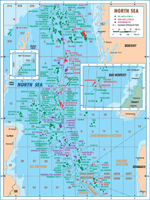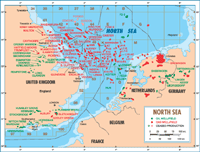Western Europe: Germany
Aug. 2001 Vol. 222 No. 8 International Outlook WESTERN EUROPE North Sea portions written by Arthur Andersen-Petroleum Services Group, London Germany
WESTERN EUROPENorth Sea portions written by Arthur Andersen-Petroleum Services Group, London Germany
While Germany experienced slow but steady growth in 2000, its federal and state taxes continued to put oil and gas at a disadvantage against heavily subsidized energy sources, such as coal and wind power. Increased oil and natural gas prices added revenues, but burdensome taxes impacted overall oil industry activity. Licensing / exploration. While exploration activities declined – with a 67% drop in 3-D seismic surveys (to 58 sq mi from 178 sq mi) – Denerco Oil and Intrepid Energy North Sea Ltd. acquired Germany’s largest offshore license, covering a 2,230-sq mi area south of the Danish section of the Central Graben. An expected decrease in 2-D seismic surveys in 2001 (to 186 mi from 909 mi) will be offset by a sharp increase in 3-D surveys, to more than 600 sq mi. Production. For the first time since 1993, German oil production in 2000 surpassed 22 million bbl (up 13%, to 22.6 million bbl). There were increases in crude and condensate output. This occurred despite significant declines, such as a 27.7% decrease in the number of wells (to 13 from 18, including one less offshore well), a 36.6% drop in feet drilled (to 141,756 ft from 223,866 ft) and a 36.8% decline in offshore feet drilled (to 23, 439 ft from 37,114 ft). However, Germany was able to increase its exploitation of scarce domestic energy resources, thanks to additional technologies, such as horizontal drilling. However, natural gas production did fall 5.8% (to 2.1 Bcfgd from 2.23 Bcfgd). Reserve figures were mixed, with oil increasing 3.6%
(to 318.6 million bbl from 307.7 million bbl), but natural gas reserves slipping 2.2% (to 9.32 Tcf from 9.53
Tcf). |
- Applying ultra-deep LWD resistivity technology successfully in a SAGD operation (May 2019)
- Adoption of wireless intelligent completions advances (May 2019)
- Majors double down as takeaway crunch eases (April 2019)
- What’s new in well logging and formation evaluation (April 2019)
- Qualification of a 20,000-psi subsea BOP: A collaborative approach (February 2019)
- ConocoPhillips’ Greg Leveille sees rapid trajectory of technical advancement continuing (February 2019)




